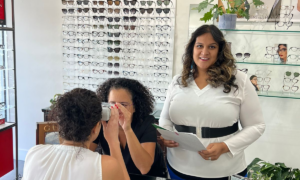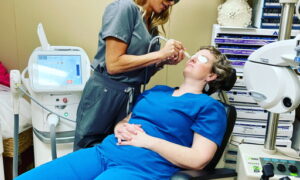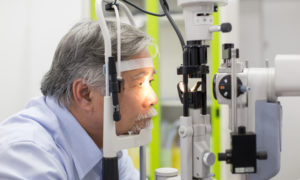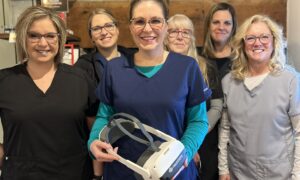
Photo credit: Getty Images
Insights into how best to serve & sell to CL patients.
May 15, 2024
The Contact Lens Institute (CLI) published an in-depth report on everyday actions that the eyecare community can take to draw interest from potential and former contact lens wearers.
Based on research with more than 1,000 vision-corrected adults segmented by glasses-only wearers, new contact lens wearers, and contact lens dropouts, “Beyond Vision: Behaviors to Attract New & Returning Contact Lens Wearers” is the latest offering from CLI’s See Tomorrow initiative, which is designed to help practices thrive using exclusive consumer data and insights.
The 26-page document includes multiple infographics depicting high-value takeaways, which CLI notes are ideal for staff training. Another 19 quick-take columns and bulleted checklists offer practical implementation tips, all of which were contributed by 2024 CLI Visionaries.
“With 47.8 percent of glasses wearers indicating a high interest in trying contact lenses, and lapsed contact lens wearers signaling what would motivate them to resume use, the tremendous untapped potential for the category is unmistakable,” said Stan Rogaski, CLI’s executive director.
Other Articles to Explore
“Our research found specific areas of consumer excitement, concern and ‘misperception’ that eyecare practices can leverage to aid more efficient and effective contact lens conversations among likely candidates. Better yet, these aspects can be reinforced easily and quickly across the entire patient experience, from appointment scheduling to the exam to follow-up, by every member of the practice team.”
Highlights explored within the “Beyond Vision” report include:
• Sources of contact lens influence, led by optometrists and ophthalmologists (66 percent of
glasses wearers / 46 percent of new contact lens wearers), opticians (44 percent of glasses wearers /26 percent of new contact lens wearers), and friends and family (40 percent of glasses wearers, 31 percent of new contact lens wearers).
• A ranking of 25 factors that would aid potential wearers’ consideration of contacts, with an
eye doctor explaining why contacts can benefit a patient placing first (66 percent). Other aspects that practice teams may take for granted were also evident, such as understanding
insertion and removal (52 percent), taking trial lenses home (51 percent), and knowing about the range of price and performance options (47 percent).
• Primary motivators for initial contact lens trial among new wearers, who called out freedom
from glasses (44 percent), personal appearance (42 percent), and ease of use (39 percent) as the most significant.
• A review of which contact lens advancements spark the most excitement, with toric
designs (46 percent) and UV protection (43 percent) cited most by potential wearers, and contacts for digital device use and UV protection tied for the highest spot (64 percent) by new contact lens wearers.
• Practice behaviors that detract from contact lens trial, including a lack of exam staff raising
the subject, not alerting patients they were candidates, and not providing contact lens
information—all cited by about 20 percent of glasses-only respondents.
• Additional non-behavioral issues that dissuade trial, including fear factors such as patients
not wanting to touch their eye (44 percent) and infection concerns (25 percent); affordability (30 percent); and “misperceptions” that having dry eye (27 percent) and astigmatism (17 percent) prevent contact lens wear—most of which can be addressed through communication.
• Ratings from former contact lens wearers of what would motivate them to return, split by
those who dropped out within the past two years compared to longer-term dropouts.
Among more recent dropouts, awareness of new advances (55 percent), a renewed
conversation with their eye doctor about contact lens benefits (50 percent), dual/part-time wear alongside glasses (50 percent), and the availability of trial lenses (50 percent) were at the top.
• Those who abandoned wear longer ago placed the most weight on being made aware of contact lenses for a specific eye condition (85 percent), of new advances and technologies (74 percent), price and performance options (72 percent) and access to trial lenses (66 percent).
• The additive value of having contact lens advocates throughout the practice, as up to 30 percent of glasses-only wearers reported that such enthusiasm would influence their decision to try contacts. When it comes to discussing the benefits of contact lenses, the research
outcomes emphasized the importance of doctors personally having that conversation,
versus fully delegating information sharing to their teams.
• For glasses wearers, the recommendation from the optometrist or ophthalmologist matters to 66 percent of them, compared to 22 percent for eye exam staff and 8 percent for eyewear display staff.
>>The report is available for download or online reading at https://www.contactlensinstitute.org/resources/see-tomorrow/>>



























